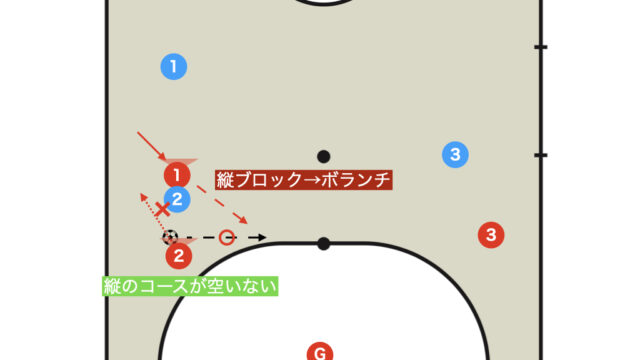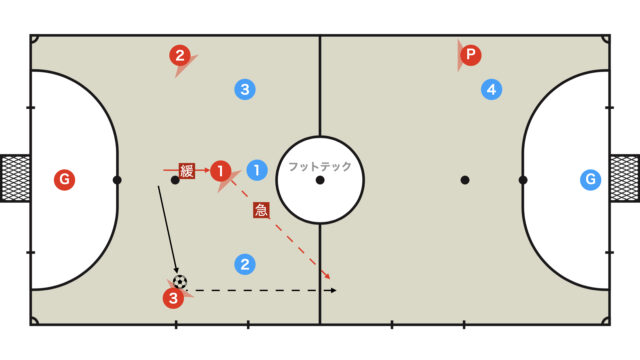Within a duo, when fixo is holding the ball and not under heavy press, it is effective for the ala to take a high position and engage in tactical maneuvers with the opposing DF to try and break through their defence.
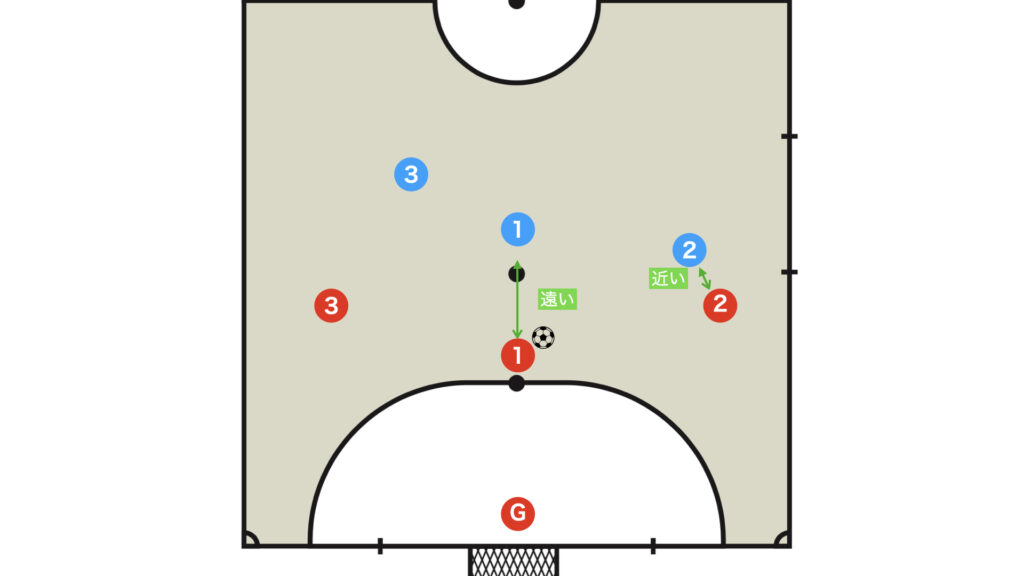
Workflow for Targeting the Space Behind
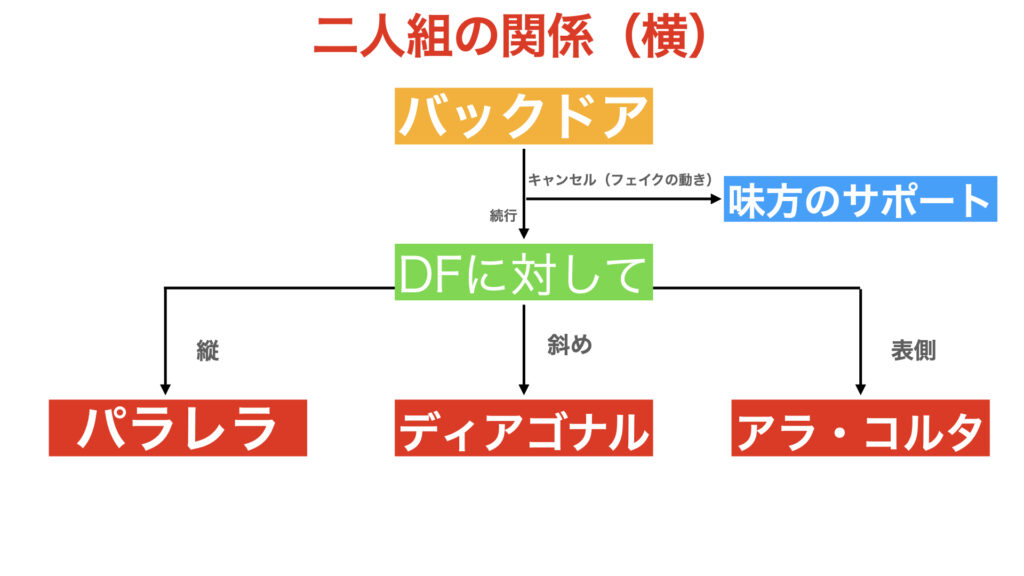
When close to the opposing DF, the basic strategy is to target the space behind them, evaluating the opponent’s position and body orientation (center of gravity) to make the optimal decision.
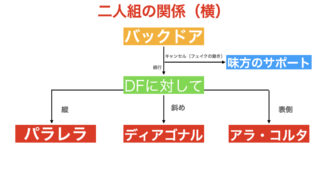
Backdoor
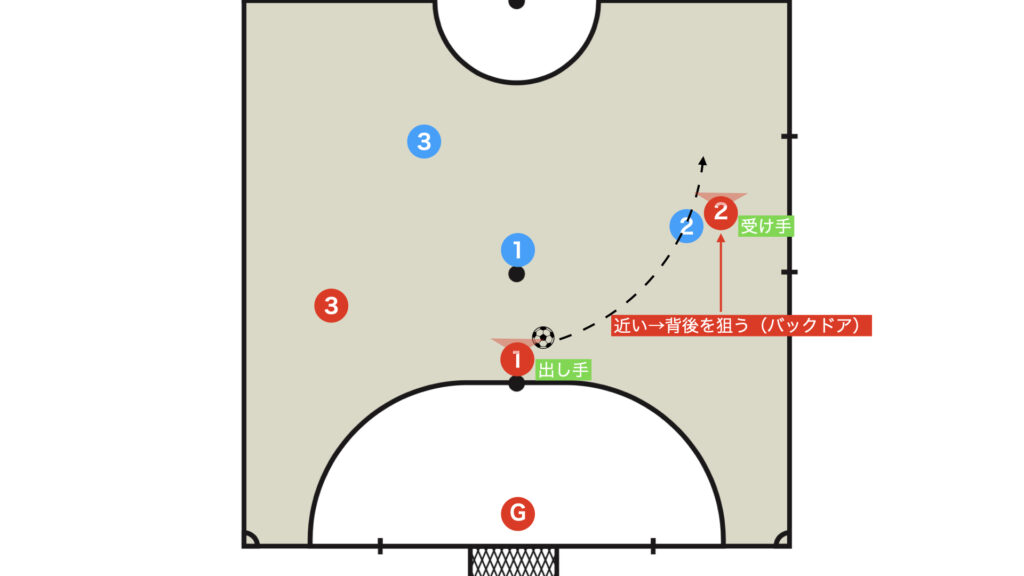
First, simply target the space behind with a backdoor run.
When the opponent is positioned forward and you target the space behind them, such a play is called a backdoor.

The action in which fixo dribbles the ball while delivering a through pass to the ala is called “ba”.
Ba (Va) means “to go” in Spanish, and it can be regarded as a form of backdoor play.
Lateral Maneuvering
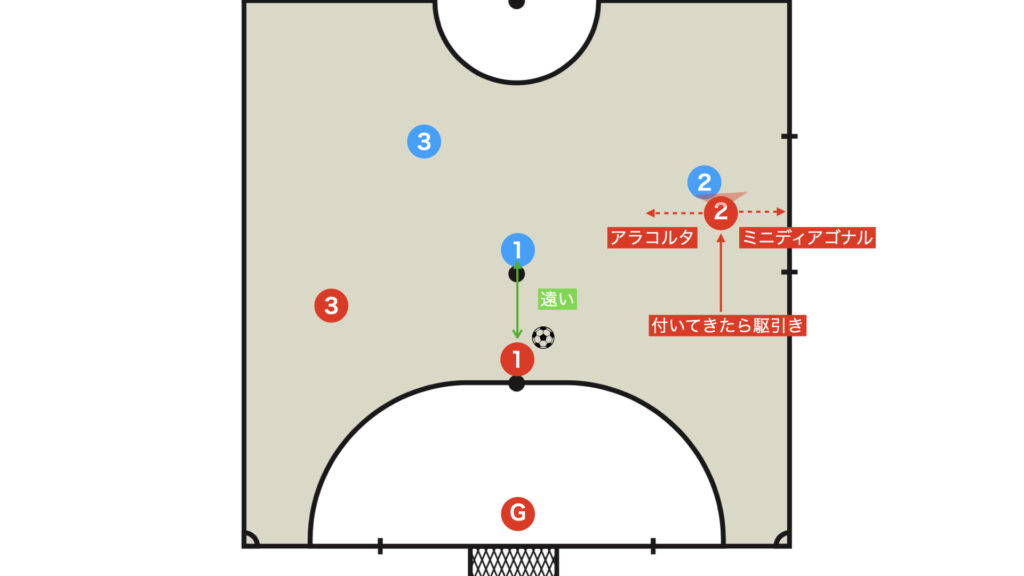
If you target the space behind the opponent but they follow you, use a mini-diagonal movement away from the ball or an Ala Corta movement that brings you closer to the ball to engage in tactical maneuvering.
Ala Corta
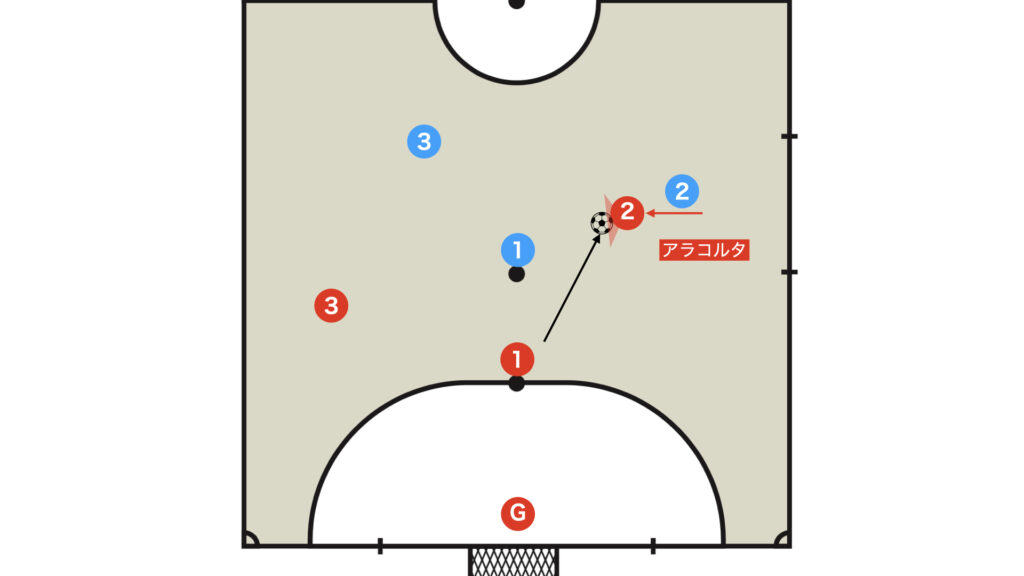
The movement of moving close to the ball is called Ala Corta.
Ala Corta demonstrates its power more effectively in the opponent’s half.
Its strength lies in receiving the ball in front of the opponent’s goal and quickly transitioning to a shot.
Ala Corta requires effective communication between the passer and the receiver to supply the ball slightly inside, making it somewhat challenging.
When not accustomed to it, it is recommended that the team establish a set play (jogata) as a signal.
Many mistakenly believe that Ala Corta is an action executed by the ala; however, precisely speaking, it is Ala Corta and not an ala action. Therefore, the movement where fixo moves close to the ball is also considered Ala Corta.
Middle Paralela (Paralela in the Center Lane)
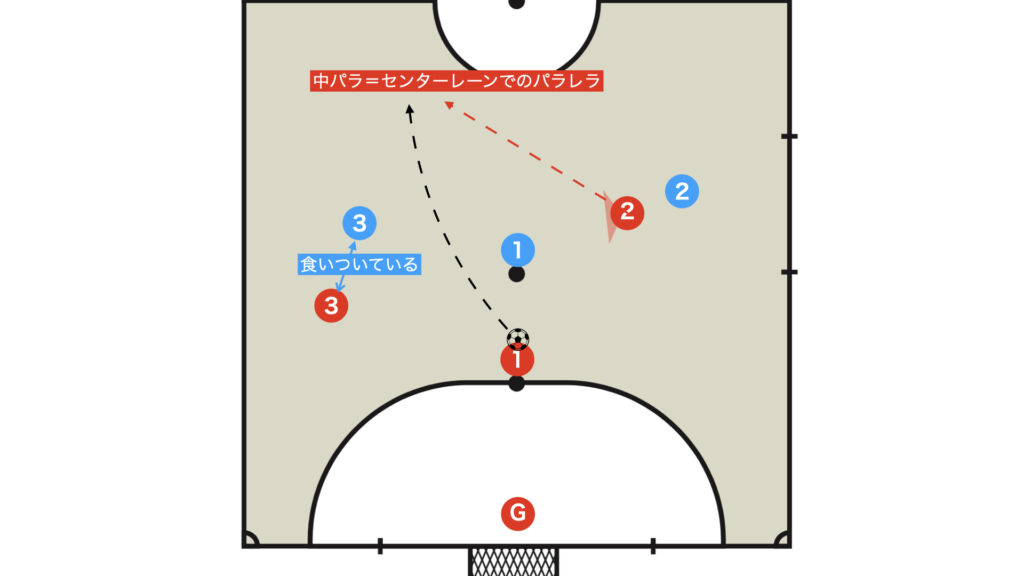
In the extension of Ala Corta, receive the ball with a sense similar to Paralela from the gap between Blue 1 and Blue 3.
This action, where the ala performs a Paralela in the center lane, is called Middle Paralela.
It is a breakdown commonly seen in formations such as 3-1 (3-0-1) featuring a false pivo, or in a quatro.
Mini-Diagonal
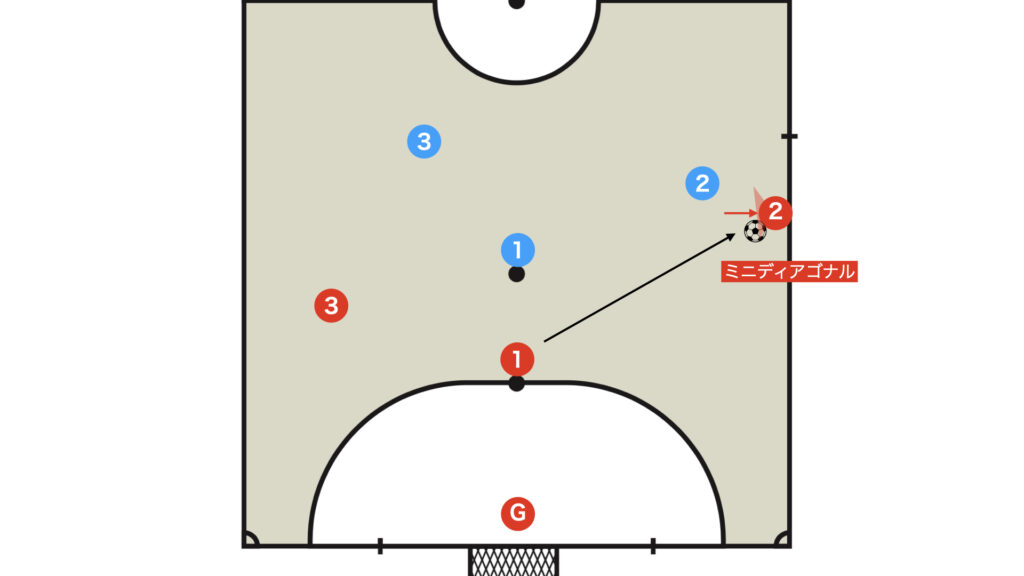
By making a cutting movement to break away from the opponent, you can create a momentarily free situation.
It is effective when the ala wants to receive the ball in a high and favorable position.
Fixo Dribbling the Ball
Ba
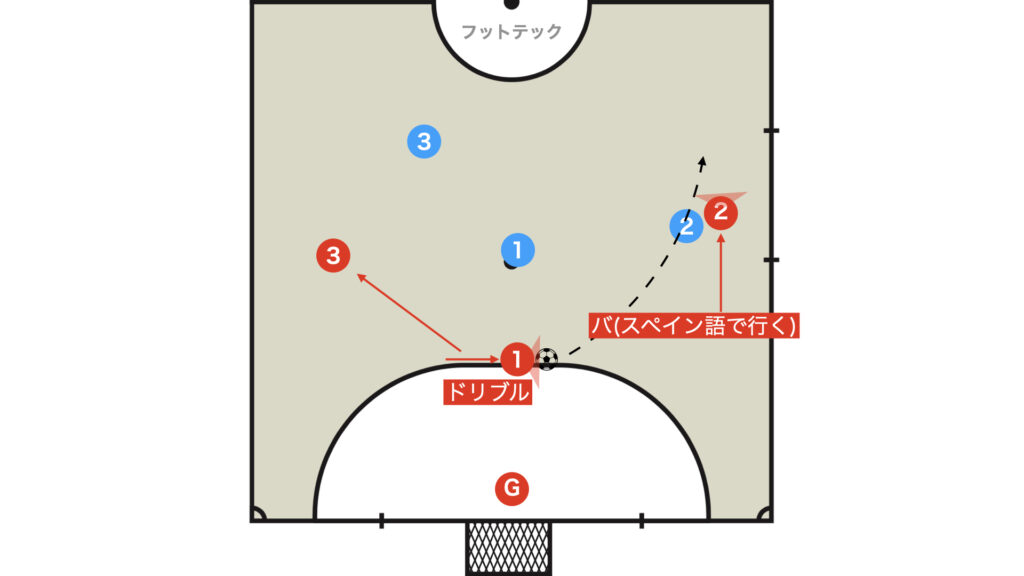
When fixo (Red No.1) dribbles, and simultaneously the ala (Red No.2) targets the space behind (backdoor), it is called “ba”.
In practice, it can occur in situations such as a 3-1 where the ala (Red No.1) receives the ball and performs a Central dribble towards the center lane.
When the Ball Cannot Be Passed to the Ala → Dribble into the Space
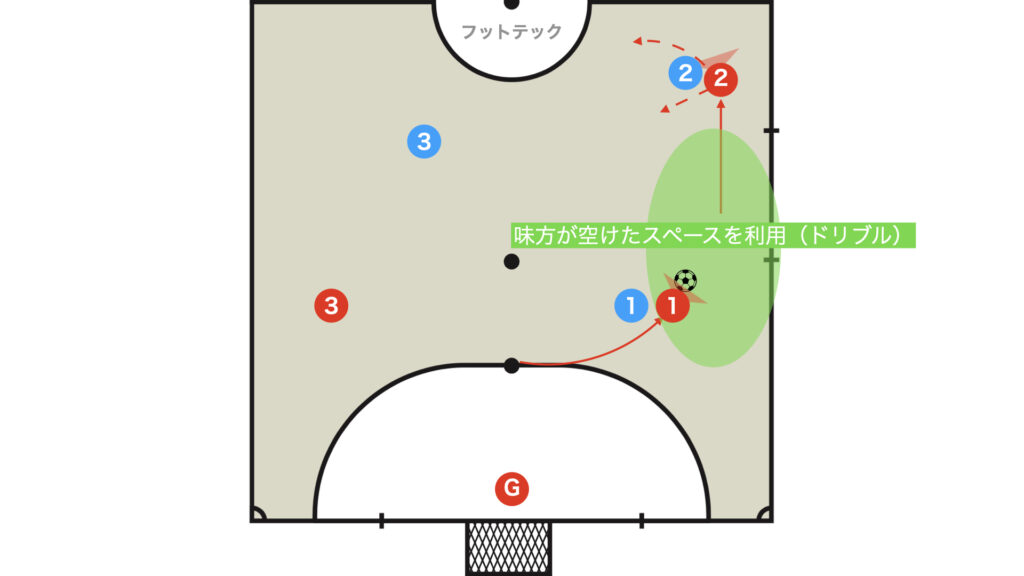
If the ala moves to cover the space behind but the ball cannot be delivered, then simply dribble into the space left open by the ala.
At this time, it is desirable for Red No.2 to cut inside (make a cut-in) to secure a dribbling path and passing lane for Red No.1.
Backdoor Cut (Puerta Atlas)
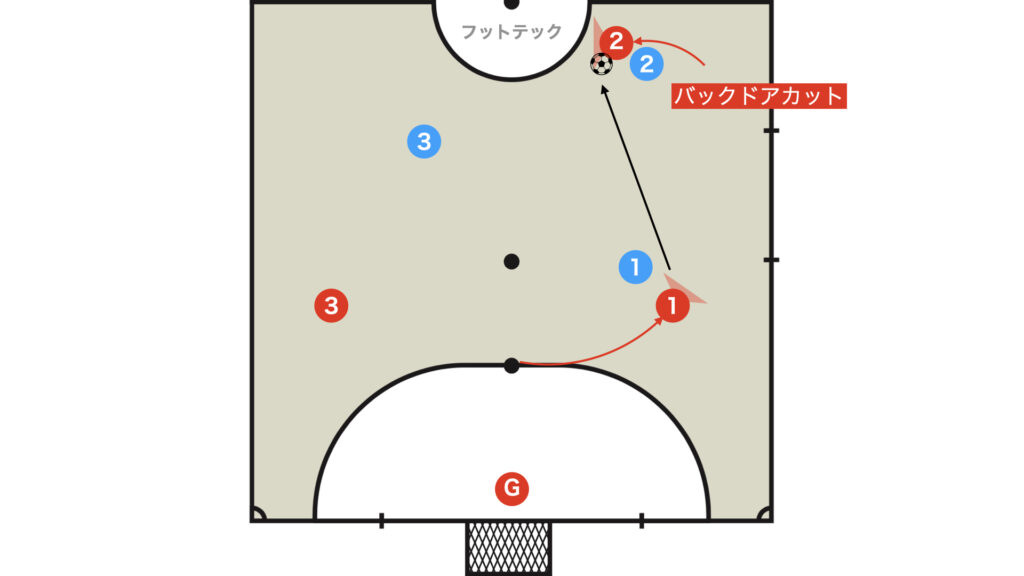
Receiving the ball by moving around the opponent from behind is called Backdoor Cut (Puerta Atlas).
Crossing the opponent’s back is referred to as a back cut, and receiving the ball by taking up the space behind the opponent is called a backdoor cut.
In competitive futsal, it is more common for the pivo to execute a backdoor cut behind the opponent and proceed to shoot.
Front Cut (Ala Corta)

When the opposing DF is wary of the space behind, it is very effective to receive the ball on their front side by moving close to the ball (Ala Corta).
Such an action of crossing in front of the opposing DF is called a front cut.
Central Push
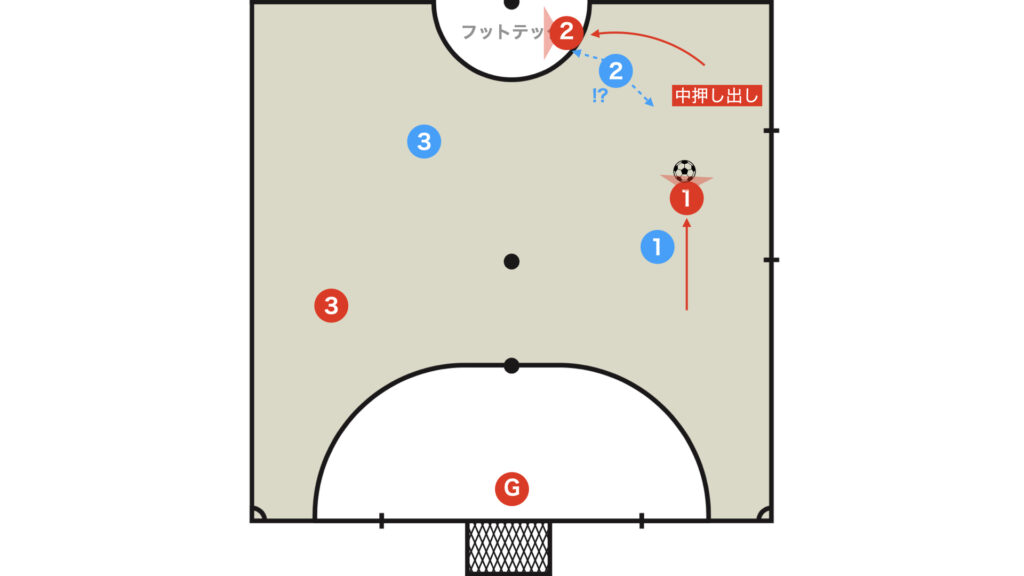
When Red No.2 cuts in and dribbles forward into the space created, this duo relationship is called Central Push.
If Red No.1 can shake off Blue No.1 with a dribble, it can create a numerical advantage and cause hesitation for Blue No.2.
When the Opposing DF is Drawn Out
When Aligned Vertically with a Teammate
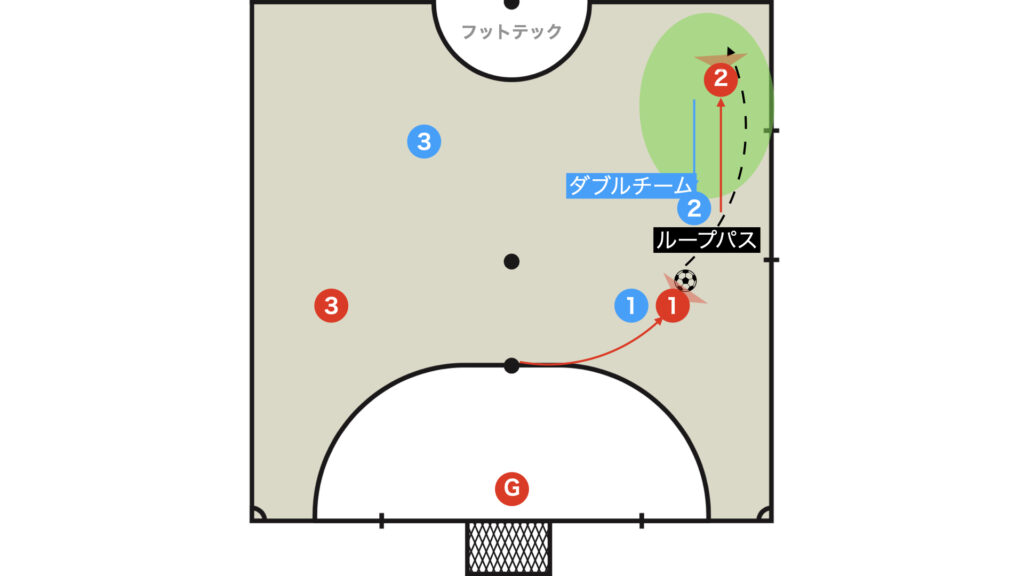
If you are aligned vertically with a teammate in the same lane, the opposing DF will be positioned ahead, so it is safe to use a loop pass (or a lob pass if available).
If the opposing DF is so tightly marking that even a loop pass is not possible, you should avoid forcing a pass and instead play the ball outwards.
When a Teammate Cuts In
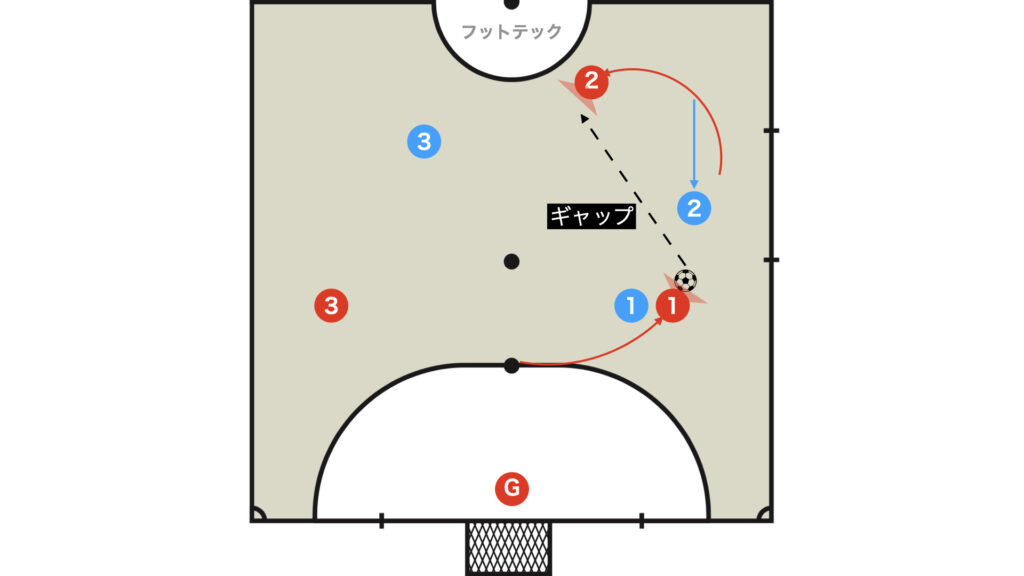
If a teammate cuts in and secures a passing lane, you can thread a ground pass through the gap.
When the Ball Holder is Pressured → Support
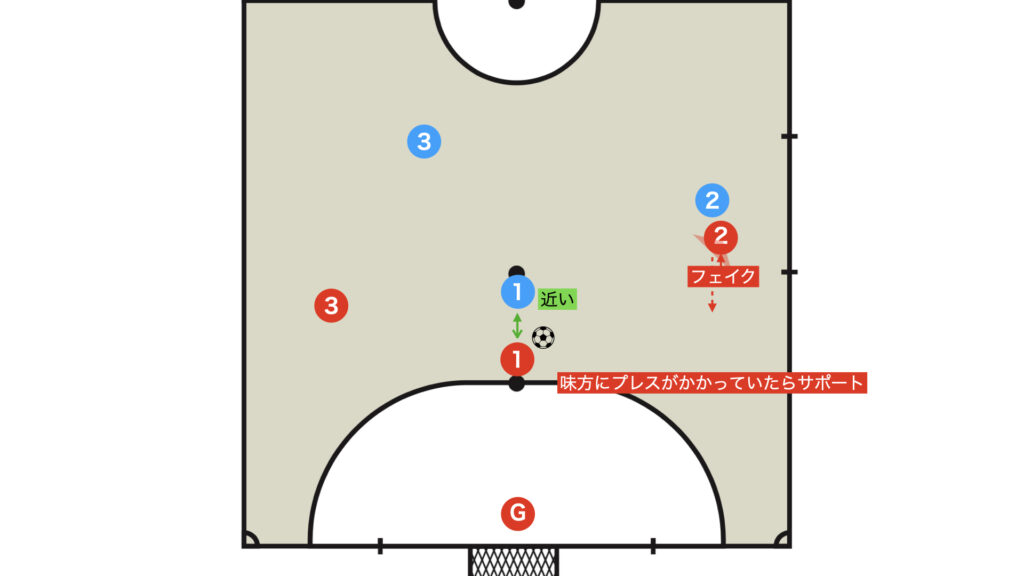
When fixo (the ball holder) is pressured and cannot receive the ball in a high position, support should be provided in a way that neutralizes the press.
This entire process turns into a fake (Finta) movement.
Sometimes, the ala’s maneuvering is mistakenly viewed as an individual tactic; however, since it only works when the passer and receiver are in sync, it must not be a self-centered move by the ala. In other words, as shown in the diagram above, it is crucial that both the passer and receiver are fully aware of not only the opposing DF’s situation but also that of their teammates.
Cross
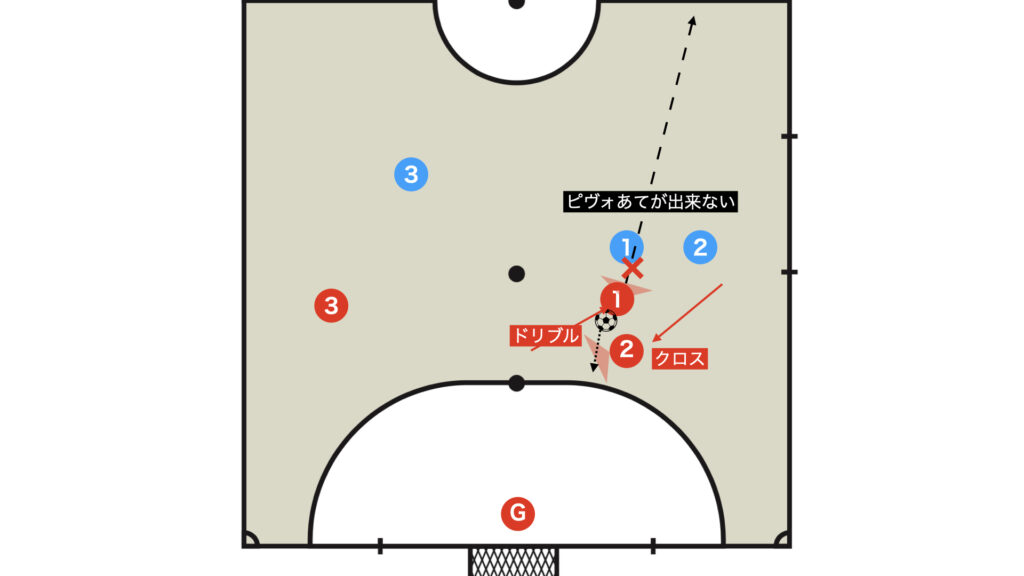
Although uncommon among advanced futsal players, there is also a tactic called a cross (or crossing) in which a player moves around the back of the ball holder to provide support.
While it is highly effective as support for the pivo, it is rarely used in back-passing situations because it may allow the opposing DF to jump and intercept.
If you choose to execute it, it is crucial that the player who delivered the pass with a heel (Red No.1) supports Red No.2 with either a block or a curtain after passing.
Practice Menu
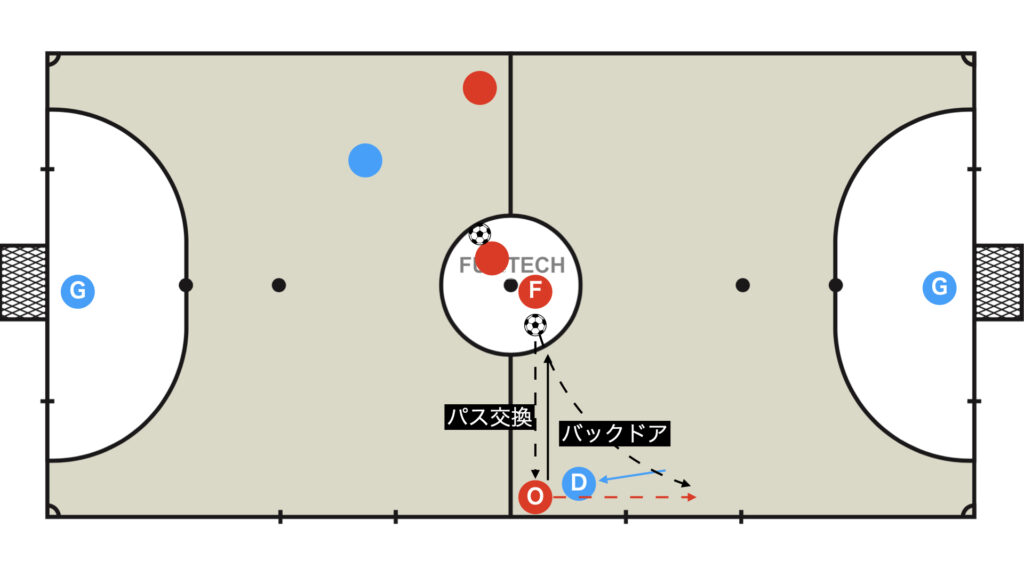
- Score a goal or secure the attack by having fixo and the ala exchange passes five times
- In attack, be mindful of the ala’s tactical maneuvers
- In defense, focus on the 1st DF’s pressing to avoid being caught out the back
Thank you very much for reading this article to the end.
If you found this article useful, please consider sharing it using the social media share buttons above.
We regularly share valuable insights on futsal tactics on Twitter, so if you haven’t followed us yet, we’d appreciate your support!
We are committed to raising the level of futsal in Japan by sharing high-quality information through discussions with individuals who have coaching experience in the F.League and overseas.
If you have any questions or notice any mistakes, feel free to leave a comment below.
We update our articles regularly, so if you’d like to keep reading, please bookmark our site or search for “FutTech”!
